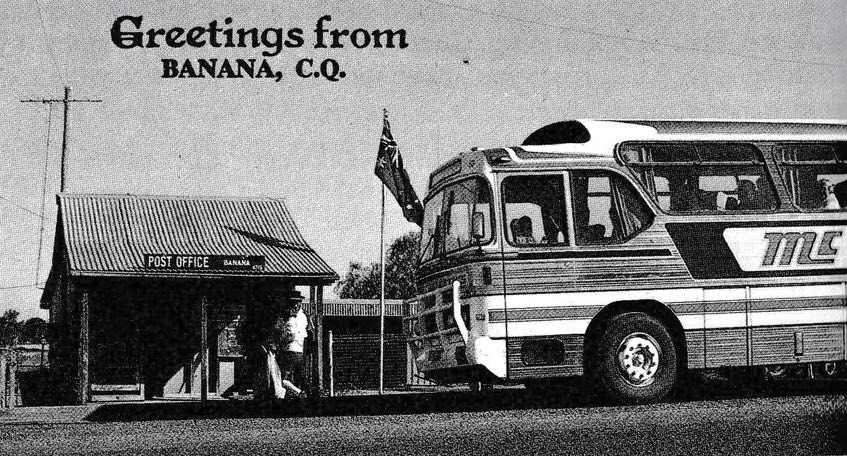DRAFT!!!!
Worklist
The News in Music
Instrumentation: symphony orchestra (3.3.3.3. – 4.3.3.1 – Timp. / 3 perc. / harp / keys – strings – samples) — First Performance: South West German Radio Symphony Orchestra (cond. Ilan Volkov); ‘Donaueschinger Musiktage’, Donaueschingen GER October 2017; commissioned by South West German Radio with additional support from the Australia Council for the Arts. — Duration 27′ / 2017
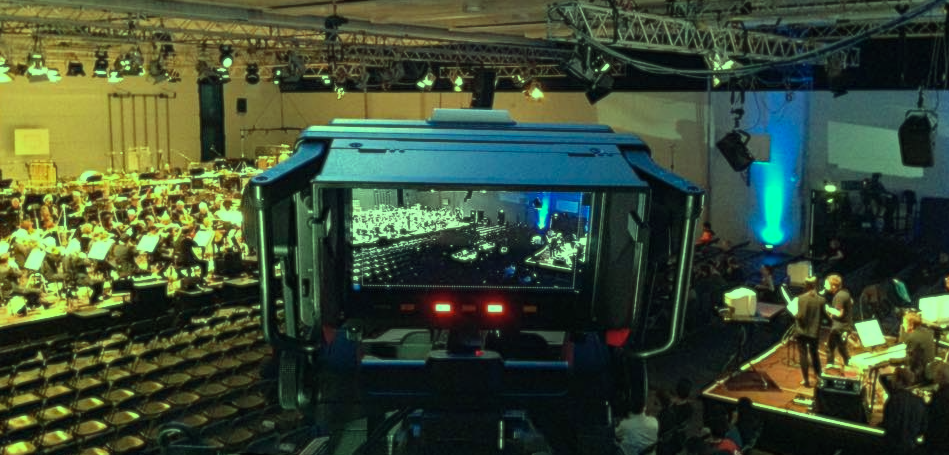
“Every evening we just happen, no explanation needed. Something happens, we react. We will provide stable sound images in unstable times. We will make meaning in the service of power. We will master the signs. Every evening the world will fall apart only to be miraculously rebuilt while you sleep, and then torn down again at the same time tomorrow.“
“…cheap entertainment music. And then when somebody shows up like a village idiot, whose The News in Music is a US-American modelled news music strung together in a Hollywood-like manner, then it hails in a concert of ‘boos’. (Badische Zeitung)
“If (the composer) had sold each individual scrap to television companies, he would be a millionaire.” (Musiktexte)
“It’s a scandal that not more people were outraged.” (Stuttgarter Zeitung)
The News in Music celebrates the technical aspects of the often-overlooked sub-genre of ‘orchestral news music’, and is a ‘package’ of imaginary television news music for symphony orchestra, presented live in the concert hall. Inspired by the short forms that composers write for TV news productions, the work consists of sixteen cues of news music from sixteen different imaginary TV networks. The package is followed by a coda entitled, Tabloid Lament. Although the work was written as a contribution to current debates on the social function, and symbolic relationship to power of contemporary TV news media, the work also makes an intervention with regards the sites of transmission for contemporary orchestral music: by placing orchestral music normally associated with televisual content and reproduction back in a live, concert hall setting, listeners are prompted to reflect on the social function, and symbolic relationship to power of the orchestra. (TM)
back
Instrumentation: Orchestra and Revox Tape Machine (3.3.3.3. – 4.3.3.1 – / 3 perc. / strings – samples) — First performance: Philharmonisches Orchester des Staatstheaters Cottbus (cond. Evan Christ); Staatstheater Cottbus GER — commissioned by Philharmonisches Orchester des Staatstheaters Cottbus — Duration 4′ / 2011 (rev. 2016)
ORCHESTRAL
The News in Music
Instrumentation: symphony orchestra (3.3.3.3. – 4.3.3.1 – Timp./3 perc./harp/keys – strings – samples)
First Performance: South West German Radio Symphony Orchestra (cond. Ilan Volkov); ‘Donaueschinger Musiktage’, Donaueschingen GER October 2017; commissioned by South West German Radio with additional support from the Australia Council for the Arts.
Duration 27′ / 2017
“Every evening we just happen, no explanation needed. Something happens, we react. We will provide stable sound images in unstable times. We will make meaning in the service of power. We will master the signs. Every evening the world will fall apart only to be miraculously rebuilt while you sleep, and then torn down again at the same time tomorrow.“

“…cheap entertainment music. And then when somebody shows up like a village idiot, whose The News in Music is a US-American modelled news music strung together in a Hollywood-like manner, then it hails in a concert of ‘boos’. (Badische Zeitung)
“If (the composer) had sold each individual scrap to television companies, he would be a millionaire.” (Musiktexte)
“It’s a scandal that not more people were outraged.” (Stuttgarter Zeitung)
The News in Music celebrates the technical aspects of the often-overlooked sub-genre of ‘orchestral news music’, and is a ‘package’ of imaginary television news music for symphony orchestra, presented live in the concert hall. Inspired by the short forms that composers write for TV news productions, the work consists of sixteen cues of news music from sixteen different imaginary TV networks. The package is followed by a coda entitled, Tabloid Lament. Although the work was written as a contribution to current debates on the social function, and symbolic relationship to power of contemporary TV news media, the work also makes an intervention with regards the sites of transmission for contemporary orchestral music: by placing orchestral music normally associated with televisual content and reproduction back in a live, concert hall setting, listeners are prompted to reflect on the social function, and symbolic relationship to power of the orchestra. (TM)
Forever Turnarounds
Instrumentation: studio orchestra (alto sax 1 (doubling cl in Bb and flute) / alto sax 2 (doubling cl in Bb and flute) / tenor sax 1 (doubling cl in Bb and flute)/ tenor sax 2 (doubling cl in Bb and flute) / baritone sax (doubling bass clarinet) – 1.4.4.1 -drumset/aux perc./bass/harp/piano/organ – strings )
First Performance: Members of South West German Radio Big Band Symphony Orchestra (cond. Pascal Rophe); ‘Donaueschinger Musiktage’, Donaueschingen GER October 2022; commissioned by South West German Radio
Duration 13′ / 2022
Forever Turnarounds is an experiment in “deep easy listening”. For music theorists, twelve, added-tone, major chords in twelve keys modulate three times in minor thirds via tritone substitutions with tertiary chord structures. For casual listeners, the sound image and tagline should feel like this: the avant-garde society dance band plays the late nite eternal return for lovers. (TM)
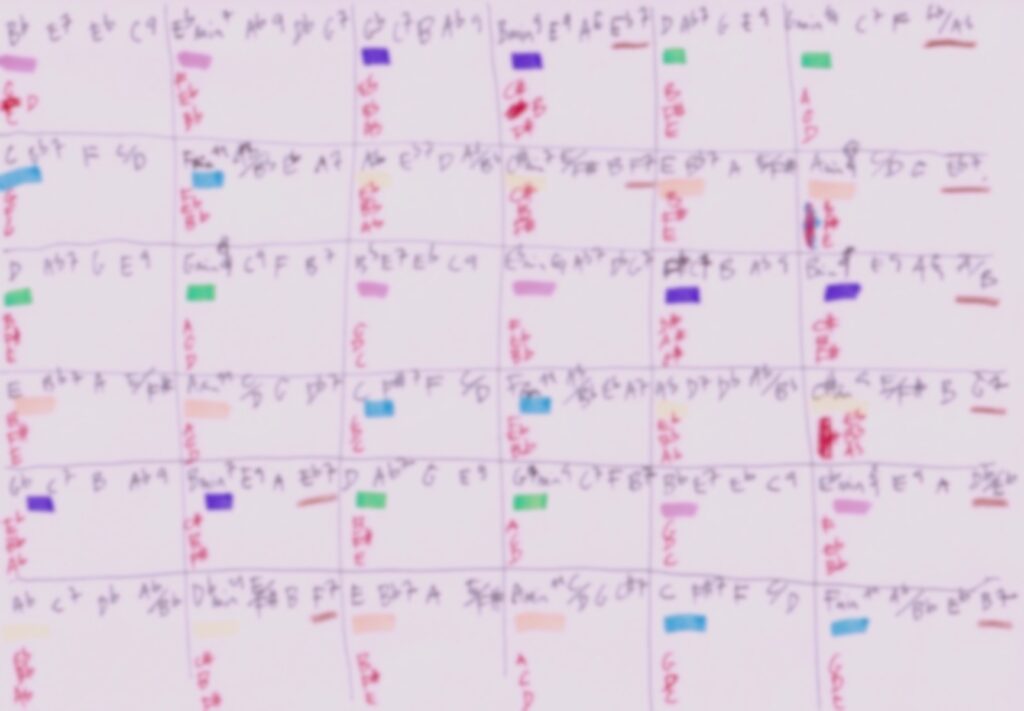
VOICES & INSTRUMENTS
Love Songs without a Subject
Instrumentation: mezzo-soprano/contralto and chamber ensemble (bass clarinet, violoncello, electric guitar, keys (rhodes and grand), percussion, recordings of Roland Juno 106 synthesisers and tape delay)
First Performance: Ditte Marie Bræin and ‘Asamisimasa’; ‘Only Connect’ Festival, Oslo NOR April 2024; commissioned by Norwegian Council for the Arts
Text: excerpt from Seminar XII from Jacques Lacan, with quotations from various love songs.
Duration 40′ / 2024 (revised 2025)
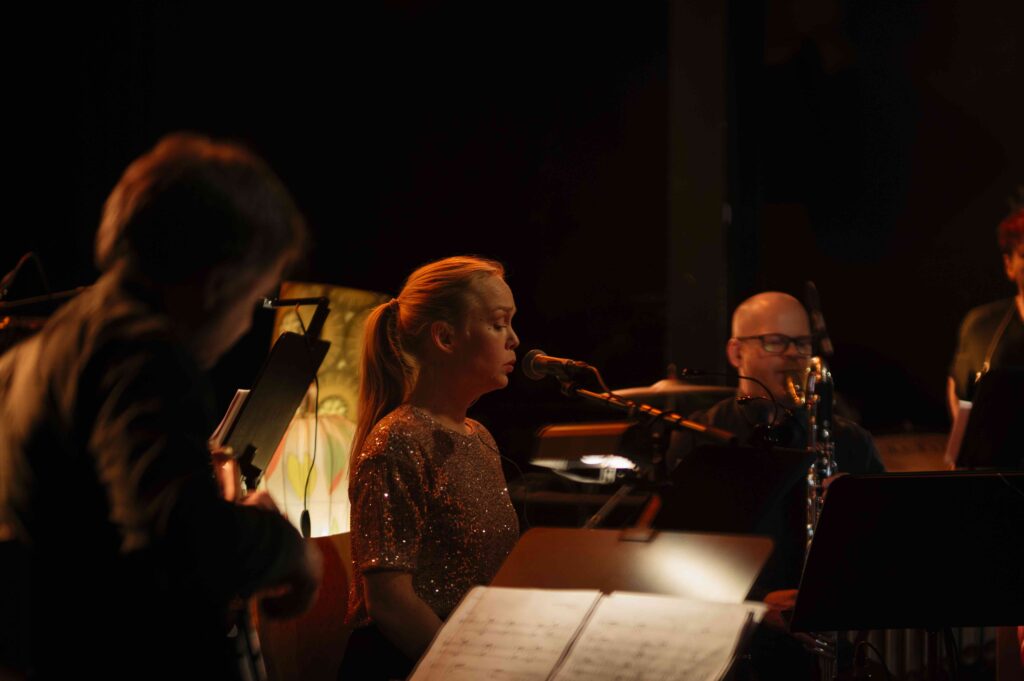
Love Songs Without a Subject is a meditation using a key text from Jacques Lacan’s Seminar XII: ‘Love is to give what you don’t have to someone who does not want it.’ This text is set across a four measure chord sequence based on the ‘descending, chromatic bass lament’. This occurs in all twelve major keys and their corresponding relative minor variants. Sometimes the sequence appears in a clear harmonic form, but more often than not, it is re-harmonised either using the the original chromatic chord sequence as extended chords, or as shell chords with added extensions. The overall effect is hopefully akin to a slow descending shepherding effect, whereby one senses a falling, but never lands; as in love.
The chord sequences are book-ended by other love songs which also make use of the chromatic bass lament. Given the wealth of examples in popular culture that employ this device, these examples are played in parallel in the piece — e.g ‘Dido’s Lament’ alongside the ‘Most Beautiful Girl in the World’, ‘Michelle’ alongside ‘My funny Valentine’ — because, like in love, and in deference to Boudleaux Bryant’s song of the same name, if two memories are recalled simultaneously, love hurts.
KEYBOARDS & PERCUSSION
Another Children’s Television
Instrumentation: two keyboardists and two percussionists
First Performance: Yarn/Wire; Miller Theater, NYC USA April 2022; commissioned by Miller Theatre NYC, with lead support from Mark H. Jackson and Karen L. Hagberg; and additional support from Australian Performing Rights Association ‘Art Music Fund’.
duration 25′ / 2022 (revised 2024)
Another Children’s Television is a live recreation of an imaginary library music record, the titles of which come from children’s television programs of the 1970’s that never saw production. On the one hand, these musical blocks of Anglo-American cultural memory may induce a melancholia for a lost time when daily routine was shaped by free-to-air television, and not everything was privatised. On the other, to quote Walter Benjamin, ‘in waste products, children recognize that the face of the world of things turns towards them, and towards them alone’. (TM)
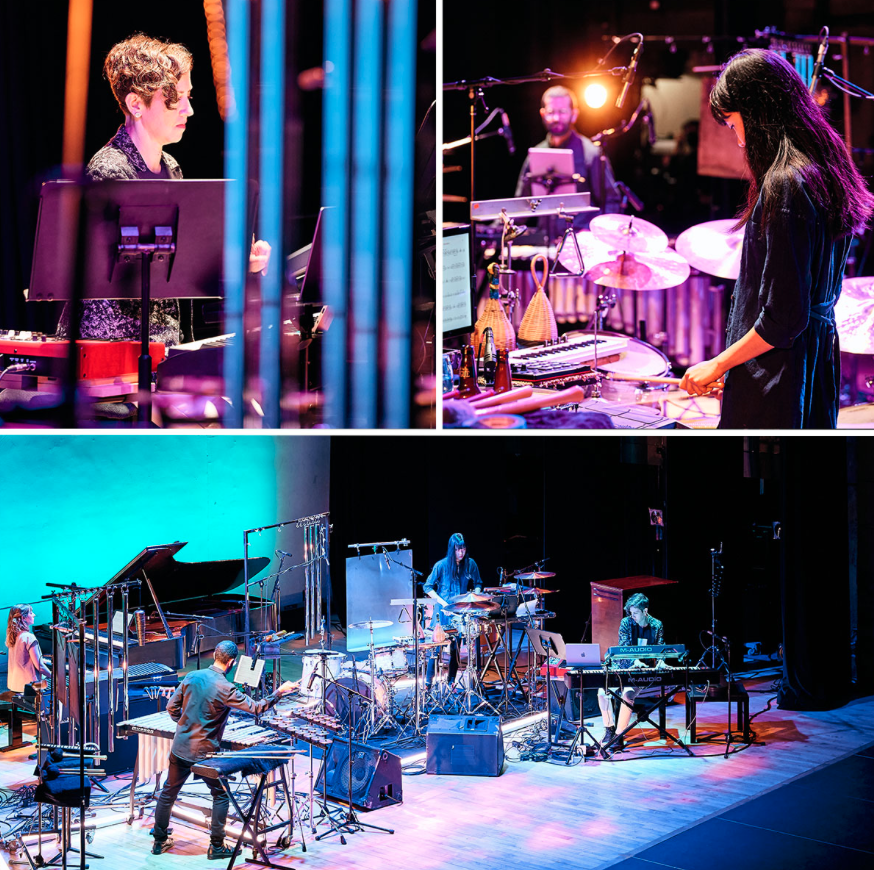
RADIOPHONIC
Song Buslines
String quartet: Mari Sawada, Biliana Voutschkova, Daniella Strasvogel and Boram Lie / Guitar: Rico Repotente / Pedal steel guitar: Anthony Burr / Radio DJ: Pat O’Shea / Voice, keyboards, electronics, realisation: Thomas Meadowcroft / Sound engineer: Thomas Monnnerjahn / Producer: Marcus Gammel / Text: Thomas Meadowcroft (with references to Psychological Aspects of Geographical Moves: Homesickness and Acculturation Stress, ed. Miranda van Tilburg and Ad Vingerhoets, Amsterdam Academic Archive)
First broadcast Deutschlandfunk Kultur, August 2013; Commissioned by Deutschlandfunk Kultur, with additional support from Berlin Senate for Culture and Europe.
Duration 50′ / 2013
“See youz later. Yeah, see youz mate. Chain-smokin’ in a wheelchair. Yeah, say g’day to Beryl and the kids hey. Cut down on the durries. Yeah, no worries will do. Diabetes. Hungry Jacks. Yeah. Nah.“
“The thing is all night, on the piss, havin’ durries, in fact it all evens up, she’d have to, oh, absolutely, people’ll be cleanin’ up for the rest of their lives, oh you look good, oh shit that was so bad because I just, kept goin’ n’ you fuckin’ you stuck it on the fuckin’, had to be real lovey-dovey, “darling, I love you”, but we just made it though.“
Song Buslines describes, through sound, the routes of ‘long-haul’ bus trips along the east coast of Australia. Here, truck stops, hot boxes and town names replace the geographical markers of the natural world and there is a separation between the spiritual and material worlds: at the end of a twenty-four hour road trip on a bus the body and suitcase may have arrived, but the heart is several thousand kilometres back down the road. (TM)
